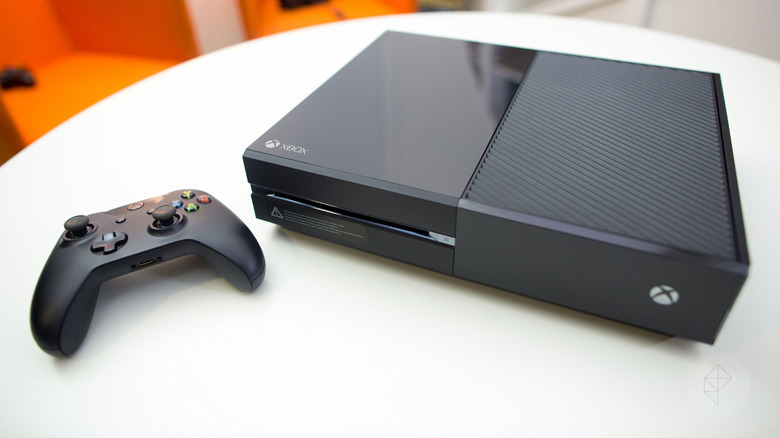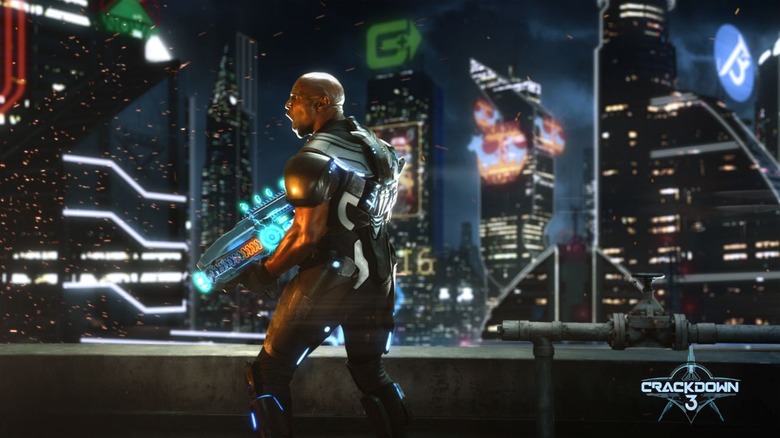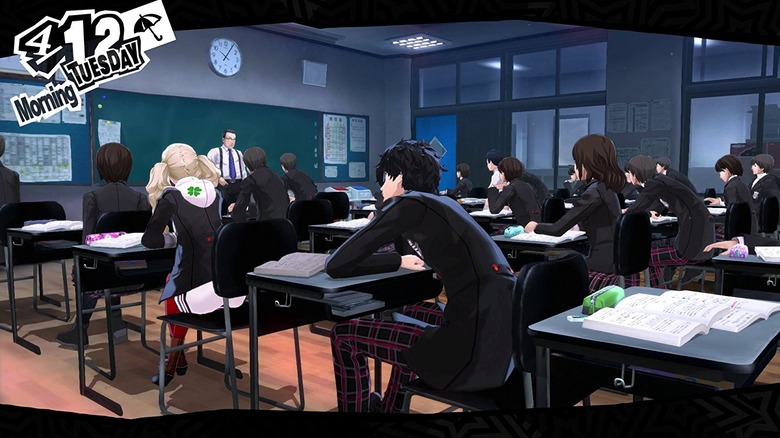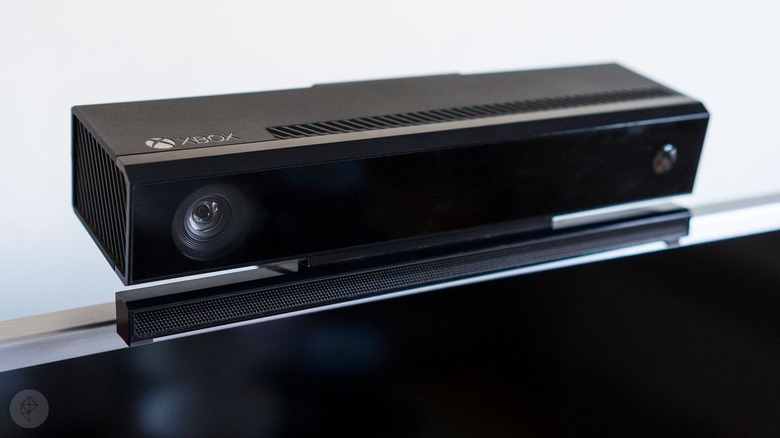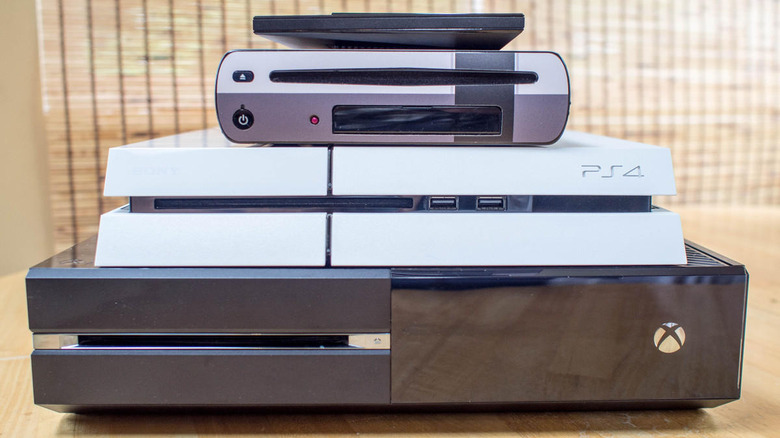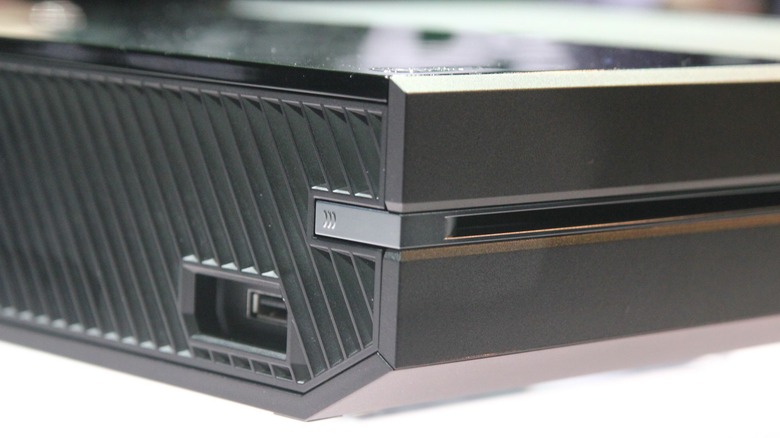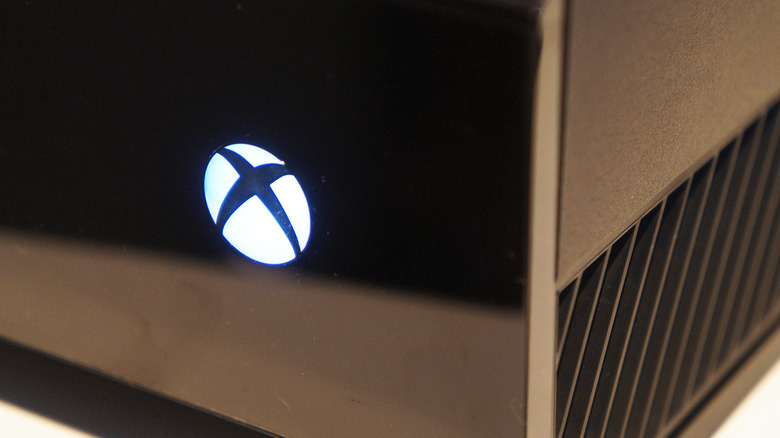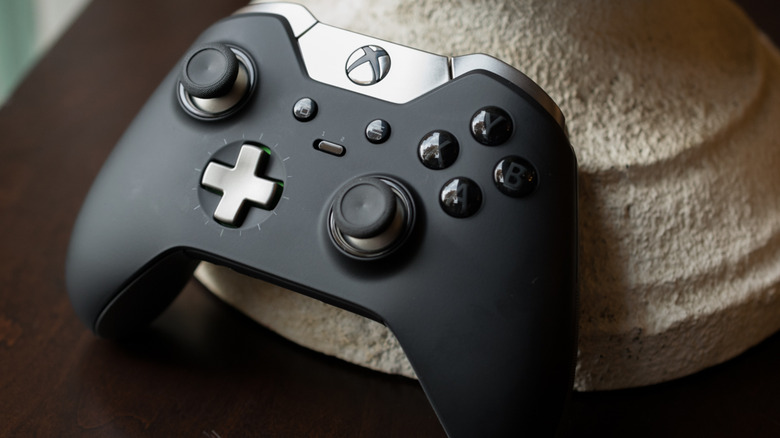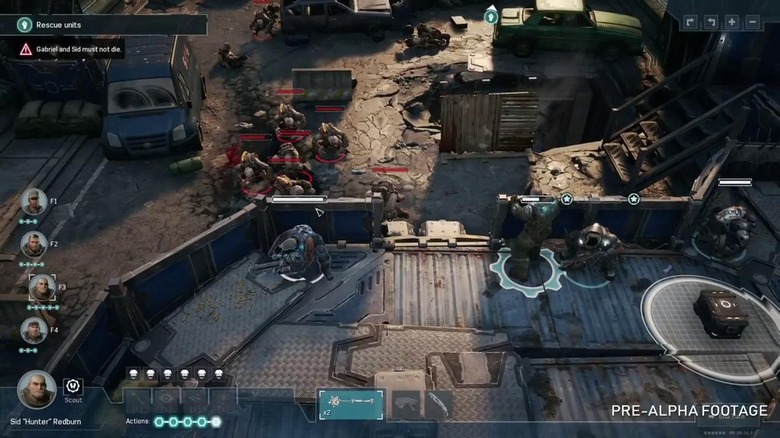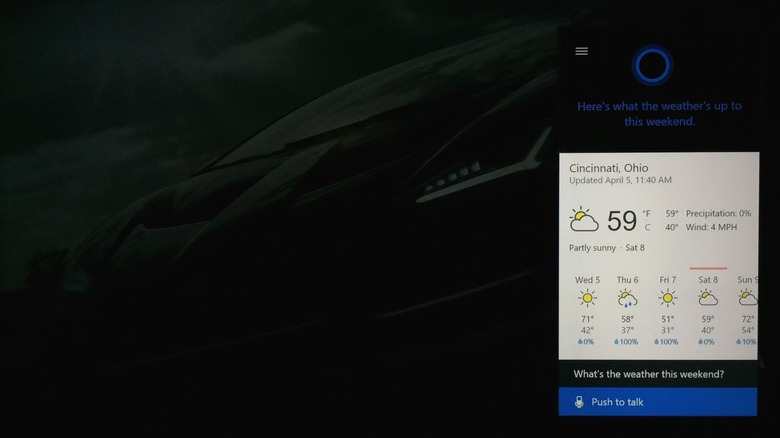Things About The Xbox One That Annoy Us To This Day
It's hard not to remember Microsoft's Xbox One reveal event.
The first look at Microsoft's new console was akin to a car accident happening in slow motion. Throughout the course of the event, everyone could see that something terrible was happening. The car hit an icy patch, the wheels lost their grip, and everyone realized that the driver was no longer in control. The Xbox One's risky bet on TV was received poorly. The car was sliding off the road.
The final impact — the crash — came when Sony announced a cheaper, more games-focused PlayStation 4. Suddenly, the Xbox One found itself on life support.
But hey: Microsoft has done a lot to turn things around since then. Microsoft Game Studios head Phil Spencer took over as the big boss at Xbox, and the company began a years-long rehabilitation process with its fans. One that's introduced a score of player-friendly initiatives and more transparency between gamers and the Xbox team. Nearly five years after that disaster of a reveal, the Xbox platform looks like it's once more on a promising path.
Still, we have some gripes, some things that still annoy us about the Xbox One. And we'd like to share them with you now.
Top-tier exclusives have been few and far between
The Xbox One and PlayStation 4 are fairly close in terms of power. And when it comes to third-party support, you'll find games from major publishers like EA, Activision, and Ubisoft on both. So if you head to your local GameStop today to purchase a console, what might sell you on buying a PS4 over an Xbox One? The answer: exclusives.
The PlayStation 4's exclusive games are blowing the Xbox One's out of the water.
If you're familiar with the Xbox brand, you've undoubtedly heard of Halo or Gears of War. You'll find new entries into both of those franchises on the Xbox One, but they're two games on a very short list of critically acclaimed exclusives. The PlayStation, meanwhile, has delivered hits like Bloodborne, Uncharted 4: A Thief's End, the God of War reboot, Horizon: Zero Dawn, and Until Dawn — not to mention updated remasters of past hits like Shadow of the Colossus and The Last of Us.
Microsoft knows it has an exclusive problem. It's why the company purchased several existing studios and started a new one. But there's a good chance current Xbox One owners won't reap the benefits of those moves for quite a while. And that sucks.
Awesome Japanese games continue to miss the Xbox One
Microsoft isn't creating enough exclusive titles. And the company isn't doing a great job at locking in third-party exclusives, either. But one of those worst realities about playing on Xbox these days is the fact that some games actively avoid the platform altogether — even when they're not exclusive to other consoles.
Wait, you say. There are games that choose to be exclusive, even though they don't have to be? Yes, there are. And they're primarily Japanese.
Look at the PlayStation 4 and you'll find a long list of Japanese games that aren't exclusive to Sony's platform, yet haven't shown up on Xbox One. Persona 5, for example, can't be found on Microsoft's machine. Nioh, which released in 2017, also has no deal with Sony, yet never came to the Xbox One. And the incredibly popular Yakuza series has remained on PlayStation, even though both Microsoft and Nintendo would love to have it on their respective consoles.
Microsoft has made some inroads with Japanese developers. Nier: Automata released on the PS4 in 2017 and finally made its way to the Xbox One in 2018. And Xbox head Phil Spencer is talking with Japanese companies about bringing more games to the platform. But this is a battle Microsoft has been losing from the get-go on the Xbox One, and when you consider the diverse library found on the Xbox 360, that's disappointing.
The Kinect never should have been bundled
The Xbox 360 version of the Kinect was a bonafide hit. Despite coming years after the launch of the console, the peripheral became the "fastest-selling consumer electronics device" ever, according to Gizmodo. And Microsoft had high hopes that its follow-up, the Kinect 2.0, would be just as well-received. It's why Microsoft chose to bundle the Kinect with the Xbox One, and why the company felt the package was well worth its $500 asking price.
It wasn't.
The PlayStation 4 stole the Xbox One's thunder, launching at a price of $400. And after a few months of getting its clock cleaned in sales, Microsoft was eventually forced to relent, releasing a Kinect-less Xbox One. The move did two things. First, it screwed those who purchased the full-priced bundle. And second, it doomed the Kinect to eventual failure. As sales of the Kinect-less Xbox One ticked up, developers were less inclined to make use of the device. And those who'd paid a $100 mandatory premium for the accessory saw it become more useless with time.
Microsoft eventually killed Kinect altogether. The company put out two upgraded Xbox One models without the Kinect's required port. And soon after, Microsoft discontinued the adapter that allowed the Kinect to work with them.
The Kinect today is more a reminder of the Xbox One's botched launch than anything. And those who still have the Kinect will tell you: it's fine for Skype and not much else.
The launch Xbox One is enormous
The Xbox 360's Red Ring of Death fiasco shook the company to its core. The service costs were significant, and had the Xbox 360 not gone on to be incredibly successful, one could legitimately wonder if Microsoft would've ever made another console. The price was that steep.
But the Xbox 360 was a success. And Microsoft forged ahead with brand new hardware in 2013 with the release of the Xbox One. But the company was not going to make the same design mistakes it did with the Xbox 360. Come hell or high water, the Xbox One was not going to overheat.
Microsoft's solution? Make the case enormous.
As you can see in the photo above, the launch Xbox One managed to dwarf every other competing console. In fact, its size was more comparable to the original Xbox than any other system. And its size put some cable boxes and old-school VCRs to shame. It was heavy, it took up a lot of space, and it came bundled with a power brick, to boot.
If you haven't been lucky enough to upgrade to an Xbox One S or Xbox One X, you're still living with this monstrosity today. We're sorry — you deserve better.
The side USB port is a terrible design choice
USB is ubiquitous. You can find a USB port on most PCs and video game consoles today, and most platforms put at least one USB port right up front for easy access. Microsoft's own Xbox 360 even did this, so you know the company is familiar with best practices.
Why, then, Microsoft stuck a USB port on the side of the launch Xbox One is a mystery.
Whether for aesthetics or because of the system's internal components, the original Xbox One has one lone USB port on its left side, and none on the front. This makes plugging a charging cable in tricky, as you can't see the port without getting to the side of the box. And if your Xbox One is stored in an entertainment center, there's a possibility you might not even have room to plug a cable in.
Not to mention: tripping over a plugged-in controller could very well damage the port, if not send your Xbox One crashing to the ground.
Microsoft wisely designed the Xbox One S and Xbox One X differently: both have USB ports on their fronts, where they should be. But if you're still playing on Microsoft's older version of the Xbox One, you're still suffering the consequences of Microsoft's poor design choice.
The capacitive power button never should've happened
There's really no need for capacitive power buttons in any, well, capacity. Ask yourself: what benefit does one provide over a physical button? There isn't one. It's there to show off and look cool. Nothing else.
But while there may not be a benefit to using a capacitive power button, there's one big downfall — as any parent or pet owner will tell you.
A cursory search online will net you tons of stories about nosy toddlers and pets who've poked around the front of the Xbox One and shut the system down. When it comes to a capacitive power button, the slight brush of a tiny finger, the intrigue of a dog's nose, or the carefree flip of a cat's tail is enough for a toggle. And if you happen to be in the middle of a raid in Destiny and your pet causes a wipe, your clan won't be happy.
But it's not your fault. It's Microsoft's fault for choosing a capacitive power button. And judging by the use of physical buttons on both the Xbox One S and Xbox One X, Microsoft regrets its original decision.
The Elite Controller is super expensive, yet cheaply made
When the Xbox One Elite Controller was first announced, gamers on the platform were excited. Finally, a first-party solution made solely for the most competitive gamers, with hair trigger locks, backside paddles, and interchangable joysticks and d-pads. What's not to like about that?
Well, pretty much everything else the controller was made out of.
For its high price tag of $150, buyers of the Xbox One Elite Controller found that the internals of the Elite were not all that different from the cheaper controllers made by Microsoft. The warranty on what was advertised as a premium product was also a joke: 90 days. All that, and the Elite Controller also managed to leave out the Bluetooth support found on the newer Xbox controller models.
As this piece is being written, there are rumors abound that Microsoft plans on introducing a brand new Elite Controller sometime in 2018. Hopefully this new model is more worthy of the high price it'll likely command. And, hopefully, Microsoft offers some sort of upgrade path to those burned by the first version.
"Play Anywhere" robs the Xbox One of exclusives
On its face, Microsoft's Play Anywhere initiative seems like a win-win for those who game on both an Xbox One and a Windows PC. Games that take part in the program enjoy benefits across both platforms, such as achievements and cross-save. And they only need to be purchased once. So if you buy a Play Anywhere title on your Xbox One, for example, you can play it on your PC for free.
Since Play Anywhere's inception, every first-party Xbox exclusive has become part of it. Gears of War 4, ReCore, State of Decay 2, Sea of Thieves, and more are Play Anywhere games, accessible on both Xbox One and PC.
The problem is that, in the meantime, Microsoft has been rolling out PC-exclusive games. And those can't be played on Xbox One.
It's hard to imagine that Xbox One gamers wouldn't take to titles like Age of Empires: Definitive Edition or the upcoming Gears Tactics, especially when you consider the success of strategy games like XCOM. But Microsoft has kept these games PC-only, which seems antithetical to Play Anywhere's entire mission, which is bridging the gap between the two platforms. Not only that: it makes the Xbox One seem less valuable as a platform. Why buy one? You can simply buy a PlayStation 4 and a PC, then you're set as far as exclusives are concerned.
If Microsoft truly believes in "Play Anywhere," its PC titles need to come to Xbox One.
Cortana is dreadful
At the time of the Xbox One's launch, its voice commands were fairly rudimentary. You could turn your system on and off, change TV channels, launch games, and open apps. The skill set was basic, but the commands were reliable.
And then along came Cortana.
Cortana is Microsoft's version of a voice assistant, sort of like Siri is to Apple. And Microsoft has been pushing Cortana more and more in its products. You can download a Cortana app on your smartphone, for instance, and if you're a Windows user, Cortana is present and ready to take orders. And she's not bad on those other platforms.
But Cortana on the Xbox One is something else entirely. She never does what you want, and she's always there when you don't want her to be. Are you trying to open Hulu on your Xbox One? Hope you're ready to have the Microsoft Edge app open so it can do a Bing search for the hula dance. Are you taking part in some fast-paced Call of Duty multiplayer? Don't be surprised if Cortana misinterprets something you say in chat and delivers you the weather. It's what she does.
Fortunately, you can turn Cortana off in the Xbox One's settings. And if you happen to want voice commands that actually work, you can re-enable the old ones.

